
The Alluring Sofia Region: A Gem of Bulgaria
Discover the Sofia Region: A blend of ancient history, stunning landscapes, and rich culinary traditions in the heart of Bulgaria.
Nestled in the heart of Bulgaria, the Sofia Region is a treasure trove of history, culture, and natural beauty. This enchanting area is home to the capital city, Sofia, which boasts a rich tapestry of ancient ruins, majestic churches, and vibrant markets. Wander through the cobblestone streets and you’ll discover the St. Alexander Nevsky Cathedral, a stunning example of neo-Byzantine architecture, and the historic Boyana Church, a UNESCO World Heritage site known for its medieval frescoes. Beyond Sofia, the region offers an array of outdoor adventures. The Vitosha Mountain, just a short drive from the city, is a haven for hikers and nature lovers. The mountain's trails provide breathtaking views and lead to hidden gems like the Boyana Waterfall. In the winter, its slopes transform into a popular skiing destination, attracting enthusiasts from all over. The Sofia Region is also a culinary delight. Savour the flavours of traditional Bulgarian dishes like banitsa, a delicious pastry, and sarmi, stuffed vine leaves, in one of the region’s many authentic restaurants. Pair your meal with a glass of rakia, the local spirit, for a true taste of Bulgaria. Whether you are exploring the vibrant cityscape of Sofia or seeking tranquility in the lush countryside, the Sofia Region promises an unforgettable experience filled with history, adventure, and delightful cuisine.
Local tips in Sofia Region
- Visit the St. Alexander Nevsky Cathedral early in the morning to avoid crowds and enjoy the serene atmosphere.
- Wear comfortable shoes for exploring the cobblestone streets and trails around Vitosha Mountain.
- Try the local street food, especially banitsa, from the city’s numerous bakeries for an authentic experience.
- If visiting in winter, check the weather and road conditions before heading to Vitosha Mountain for skiing.
- Learn a few basic Bulgarian phrases; locals appreciate the effort and it can enhance your interactions.
The Alluring Sofia Region: A Gem of Bulgaria
Nestled in the heart of Bulgaria, the Sofia Region is a treasure trove of history, culture, and natural beauty. This enchanting area is home to the capital city, Sofia, which boasts a rich tapestry of ancient ruins, majestic churches, and vibrant markets. Wander through the cobblestone streets and you’ll discover the St. Alexander Nevsky Cathedral, a stunning example of neo-Byzantine architecture, and the historic Boyana Church, a UNESCO World Heritage site known for its medieval frescoes. Beyond Sofia, the region offers an array of outdoor adventures. The Vitosha Mountain, just a short drive from the city, is a haven for hikers and nature lovers. The mountain's trails provide breathtaking views and lead to hidden gems like the Boyana Waterfall. In the winter, its slopes transform into a popular skiing destination, attracting enthusiasts from all over. The Sofia Region is also a culinary delight. Savour the flavours of traditional Bulgarian dishes like banitsa, a delicious pastry, and sarmi, stuffed vine leaves, in one of the region’s many authentic restaurants. Pair your meal with a glass of rakia, the local spirit, for a true taste of Bulgaria. Whether you are exploring the vibrant cityscape of Sofia or seeking tranquility in the lush countryside, the Sofia Region promises an unforgettable experience filled with history, adventure, and delightful cuisine.
When is the best time to go to Sofia Region?
Iconic landmarks you can’t miss
South Park
Experience the lush landscapes and vibrant culture of South Park, Sofia's premier green space for relaxation and recreation.
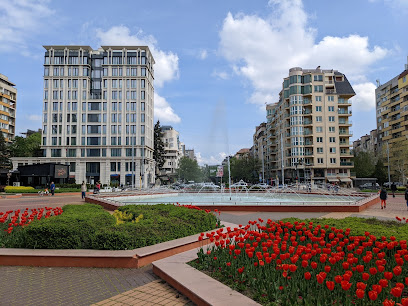
National Palace of Culture Park
Discover the vibrant National Palace of Culture Park in Sofia, a serene green oasis rich in culture, art, and scenic beauty.
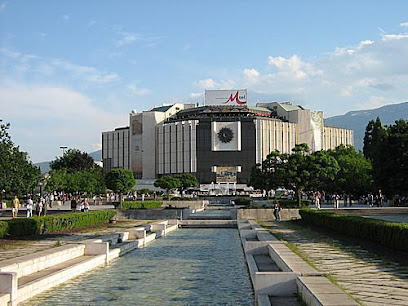
Borisova Gradina Park
Explore the lush landscapes and cultural landmarks of Borisova Gradina Park, Sofia's premier green oasis for relaxation and recreation.
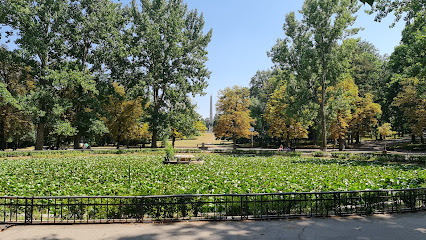
Patriarchal Cathedral of St. Alexander Nevsky
Explore the stunning architecture and rich history of the Patriarchal Cathedral of St. Alexander Nevsky, a must-see landmark in Sofia, Bulgaria.
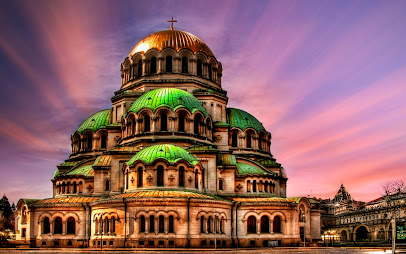
The City Garden
Discover The City Garden in Sofia – a serene park filled with lush greenery, art, and local culture right in the heart of Bulgaria's capital.
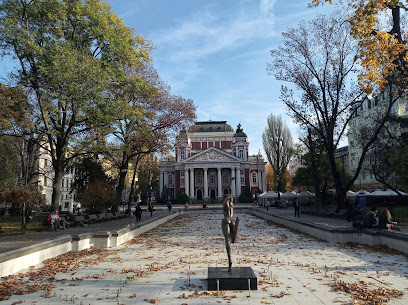
National Palace of Culture (NPC)
Discover Sofia's heart at the National Palace of Culture, a vibrant venue for art, music, and cultural celebrations in Bulgaria's capital.
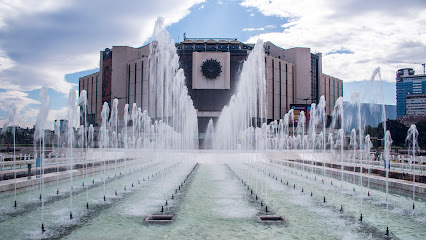
Vitosha Nature Park
Discover Vitosha Nature Park: A breathtaking escape into Bulgaria's natural beauty, just outside Sofia, perfect for hiking, skiing, and wildlife watching.
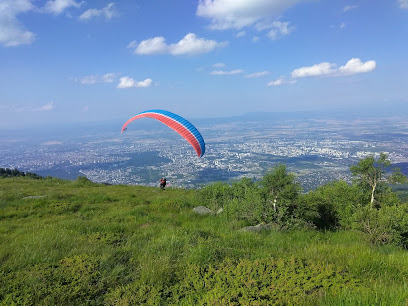
Eagles' Bridge
Discover the historical charm and stunning views of Eagles' Bridge, a must-visit landmark in the heart of Sofia, Bulgaria.
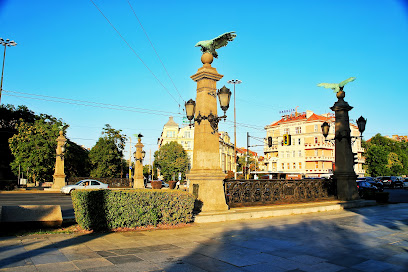
Prince's Garden
Explore the lush landscapes and historical charm of Prince's Garden, a serene park in the heart of Sofia, Bulgaria's vibrant capital.
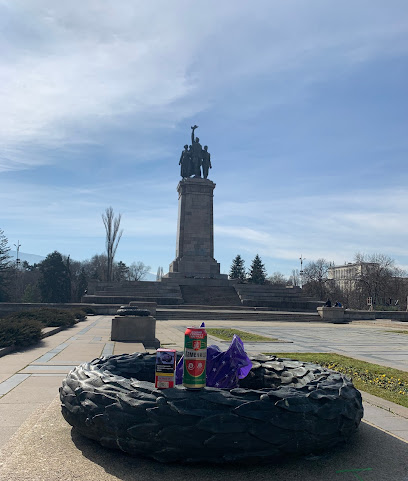
Doctors' Garden
Discover the beauty and tranquility of Doctors' Garden in Sofia, Bulgaria, a perfect blend of nature and urban charm.
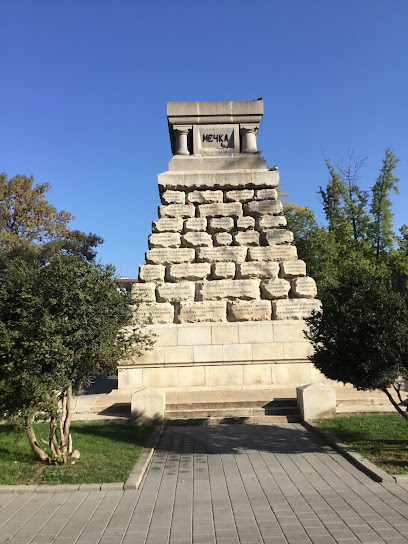
Russian Monument Square
Discover Sofia's historical charm at the Russian Monument Square, a tribute to Bulgaria's liberation with beautiful scenery and vibrant local culture.
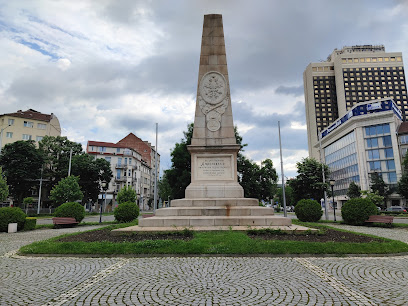
Cathedral of Saint Nedelya
Discover the beauty and history of the Cathedral of Saint Nedelya, Sofia's iconic Eastern Orthodox church, a true masterpiece of architecture and spirituality.
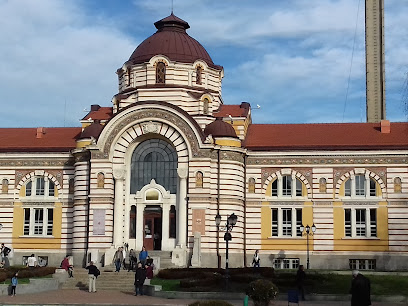
Boyana Church
Explore the stunning Boyana Church, a UNESCO World Heritage Site in Sofia, showcasing exquisite medieval frescoes and beautiful architecture amidst nature.

Kambanite (The Bells) Park
Discover the serene Kambanite Park in Sofia, where nature meets the enchanting sounds of large bells, perfect for relaxation and cultural immersion.
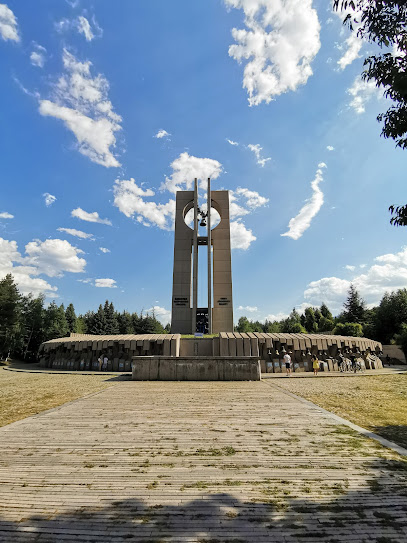
Vrana Park & Museum
Explore the picturesque beauty and royal history of Vrana Park & Museum, a serene escape in Sofia, Bulgaria, perfect for nature lovers and history enthusiasts.

Unmissable attractions to see
Borisova Gradina Park
Discover Borisova Gradina Park, Sofia's lush urban escape, where tranquility meets vibrant culture amidst stunning landscapes.
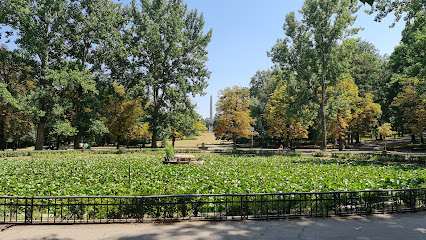
Serdika Center
Explore Serdika Center, Sofia's largest shopping mall, where shopping, dining, and entertainment come together in a vibrant atmosphere.
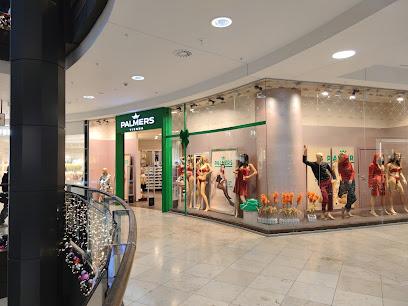
Patriarchal Cathedral of St. Alexander Nevsky
Explore the Patriarchal Cathedral of St. Alexander Nevsky, a stunning architectural gem and a spiritual heart of Sofia, Bulgaria's vibrant capital.
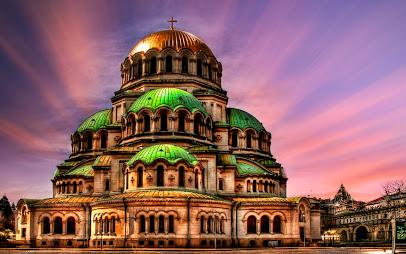
Mall of Sofia
Discover the vibrant Mall of Sofia, Bulgaria's premier shopping destination with diverse stores, dining options, and entertainment in a modern setting.
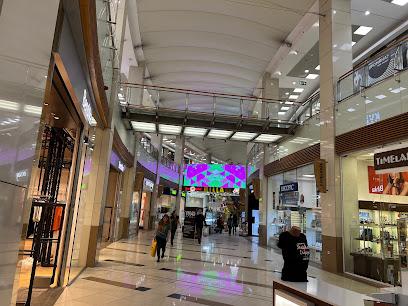
Zaimov Park
Discover Zaimov Park, a lush green sanctuary in Sofia, Bulgaria, perfect for relaxation, picnics, and enjoying nature's beauty amidst the urban landscape.
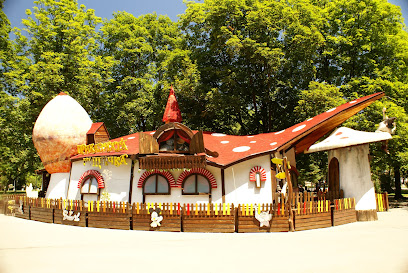
Central Sofia Market Hall
Experience the essence of Sofia at the Central Market Hall, a cultural hub filled with local treats, vibrant stalls, and a taste of Bulgaria’s rich heritage.
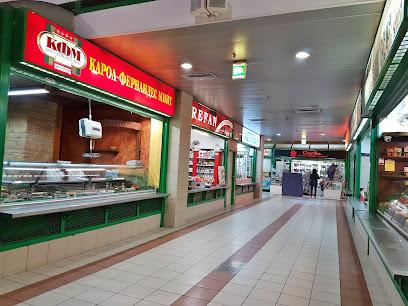
North Park
Explore North Park in Sofia, a lush urban retreat filled with scenic beauty, recreational activities, and vibrant community events.

Geo Milev Park
Explore the beauty and tranquility of Geo Milev Park, a green oasis in the heart of Sofia, perfect for relaxation and outdoor activities.
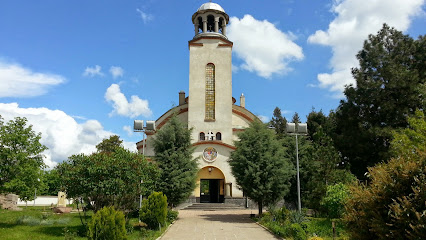
Eagles' Bridge
Discover the beauty and cultural significance of Eagles' Bridge in Sofia, a stunning landmark connecting the city's vibrant attractions.
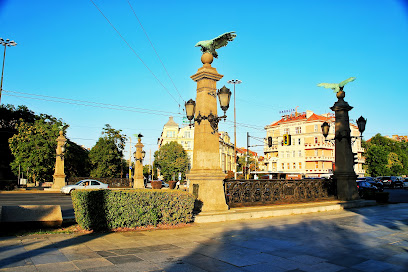
Vitosha Nature Park
Explore Vitosha Nature Park, a breathtaking natural escape near Sofia, filled with hiking trails, diverse wildlife, and stunning landscapes.
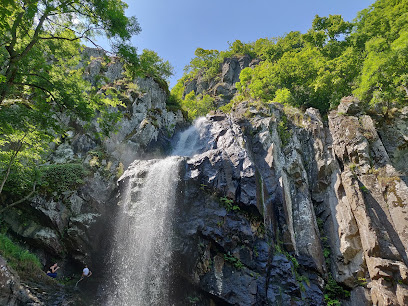
Park Center Sofia
Discover the vibrant shopping and dining experience at Park Center Sofia, a must-visit destination for tourists exploring Bulgaria's capital.
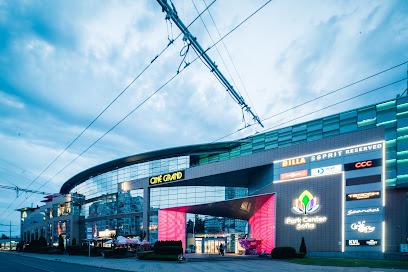
Holy Trinity Park
Discover the serene beauty of Holy Trinity Park in Sofia, a perfect blend of nature and culture for your travel experience.
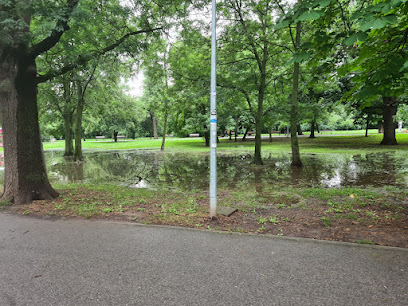
Prince's Garden
Experience the beauty of Prince's Garden in Sofia, where art and nature harmoniously blend in a serene urban oasis.
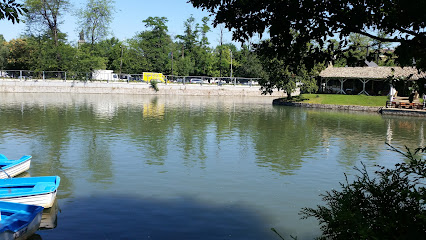
Doctors' Garden
Discover tranquility at Doctors' Garden, Sofia's lush urban park, perfect for relaxation and cultural experiences.
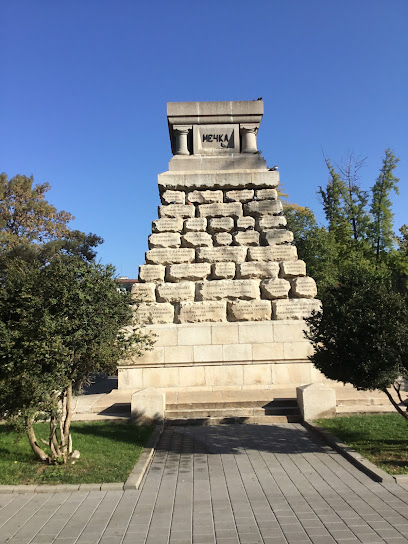
Russian Monument Square
Explore the historical significance of Russian Monument Square, a prominent landmark in Sofia celebrating Bulgaria's liberation and cultural heritage.
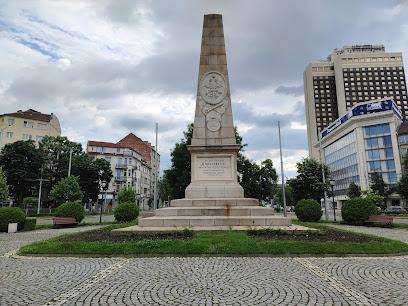
Essential places to dine
Shtastlivetsa restaurant Vitoshka
Discover authentic Bulgarian flavors at Shtastlivetsa Restaurant on Vitosha Boulevard - where tradition meets modern dining.
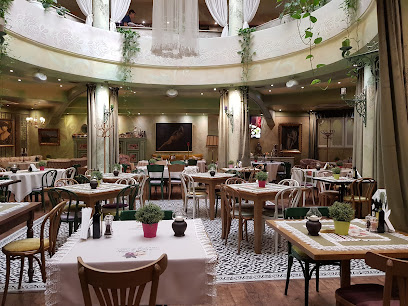
Hadjidraganov's Cellars
Experience authentic Bulgarian cuisine paired with live music at Hadjidraganov's Cellars in Sofia - a delightful cultural feast.
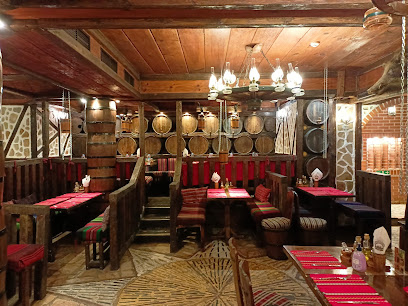
Hadjidraganov's Houses Restaurant
Discover the heart of Bulgarian culture through authentic cuisine and lively music at Hadjidraganov's Houses Restaurant in Sofia.
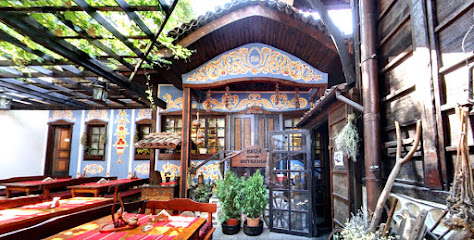
Moma Bulgarian Food and Wine
Experience the flavors of Bulgaria at Moma Bulgarian Food and Wine - where tradition meets modern culinary excellence in Sofia.
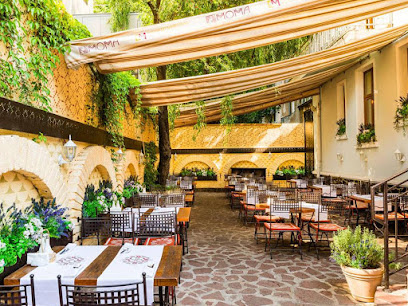
Under the Linden Trees
Experience authentic Bulgarian cuisine in Sofia at Under the Linden Trees, where tradition meets taste in a charming atmosphere.
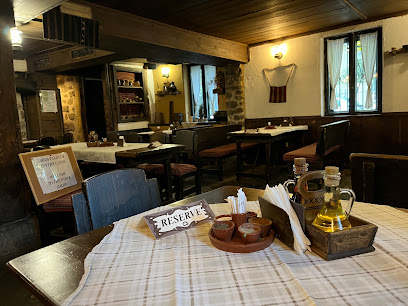
Cosmos Restaurant / Космос
Discover exceptional Bulgarian cuisine at Cosmos Restaurant in Sofia - where tradition meets modern culinary innovation.

Manastirska Magernitsa Restaurant
Experience authentic Bulgarian cuisine in a charming setting at Manastirska Magernitsa in Sofia.
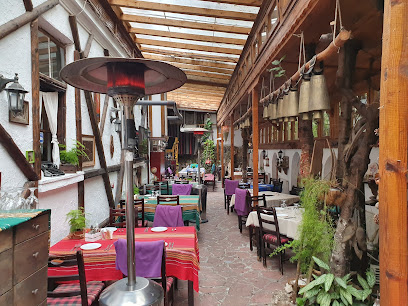
The Little Things
Experience authentic Bulgarian cuisine in the heart of Sofia at The Little Things—where every dish tells a story.
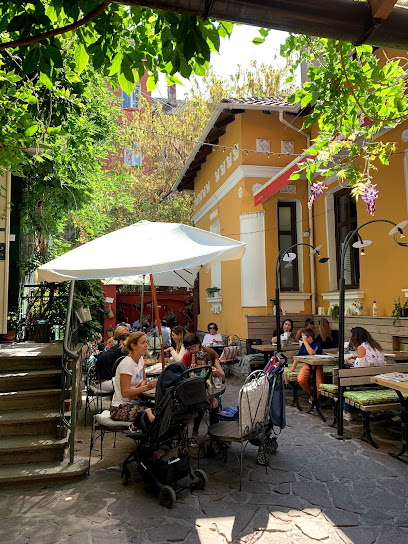
Captain Cook
Discover exquisite seafood at Captain Cook, Sofia's premier European restaurant blending local flavors with elegance.
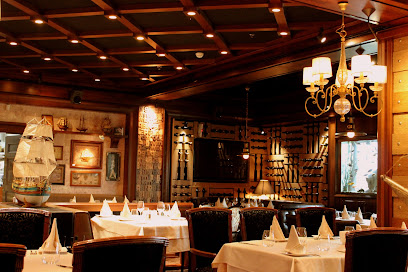
Made in Home
Experience authentic Bulgarian cuisine amidst creative decor at Made in Home - Sofia's culinary treasure.
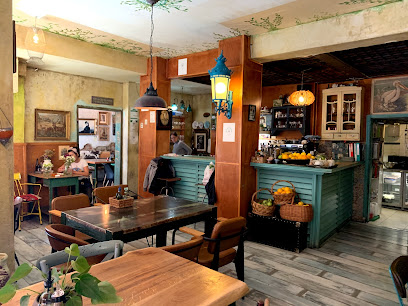
Cactus
Discover the flavors of Bulgaria at Cactus – where traditional meets modern in a vibrant Sofia setting.
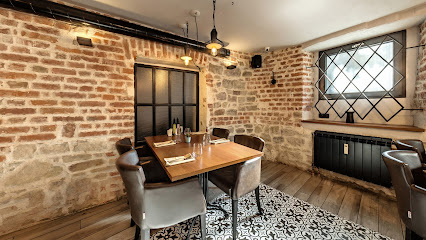
Q-ftetaria
Experience authentic Bulgarian cuisine at Q-ftetaria in Sofia - where tradition meets taste in a cozy setting.
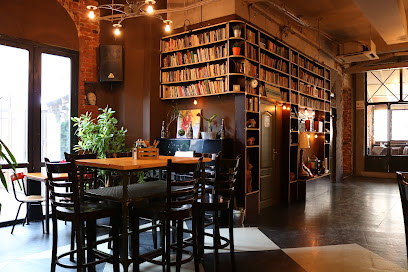
Chef's Restaurant
Experience authentic Bulgarian cuisine with a modern twist at Chef's Restaurant in Sofia's vibrant Lozenets district.
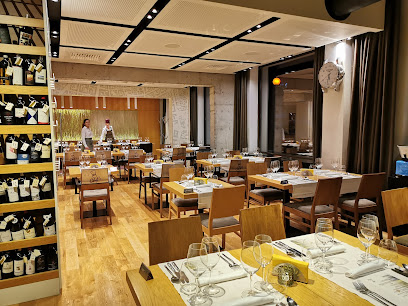
Made in Blue
Experience innovative Bulgarian cuisine at Made in Blue - where tradition meets modern culinary artistry in the heart of Sofia.
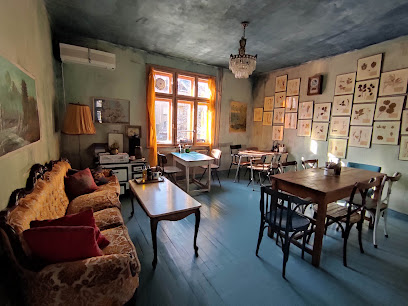
Egur Egur - Armenian Restaurant
Experience authentic Armenian cuisine at Egur Egur, where vibrant flavors meet warm hospitality in the heart of Sofia.
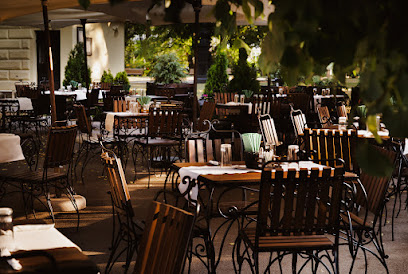
Markets, malls and hidden boutiques
The Mall
Experience Sofia's vibrant shopping scene at The Mall, with diverse stores, delicious dining, and exciting entertainment options for all ages.
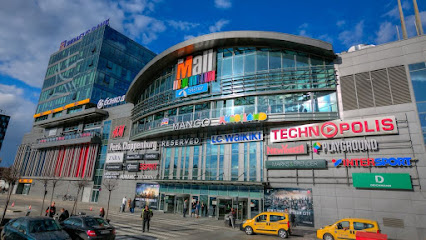
Central Universal Store (Tsum)
Discover the Central Universal Store (Tsum) - Sofia's shopping haven blending history and modernity in the heart of the city.
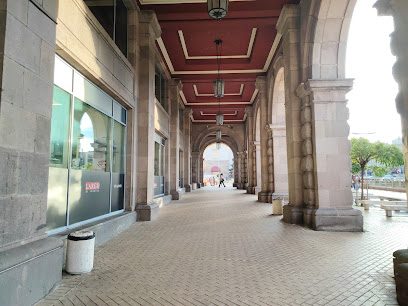
„Ruski Pametnik“ Shopping Centre
Experience shopping and dining at the vibrant 'Ruski Pametnik' Shopping Centre in Sofia, where variety meets comfort in a modern setting.
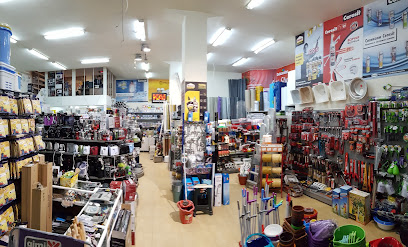
Gifted - Urban Art & Culture Hub
Discover unique gifts and local artistry at Gifted - Sofia's premier urban art and culture hub.
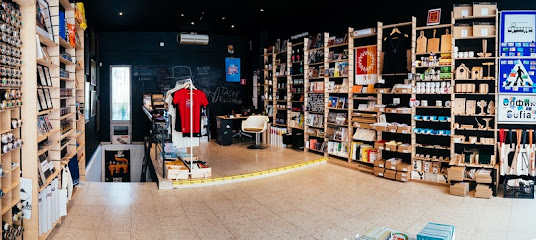
Top Gifts Ltd
Explore Top Gifts Ltd for authentic Bulgarian souvenirs and unique gifts in the heart of Sofia, capturing the essence of local culture and craftsmanship.
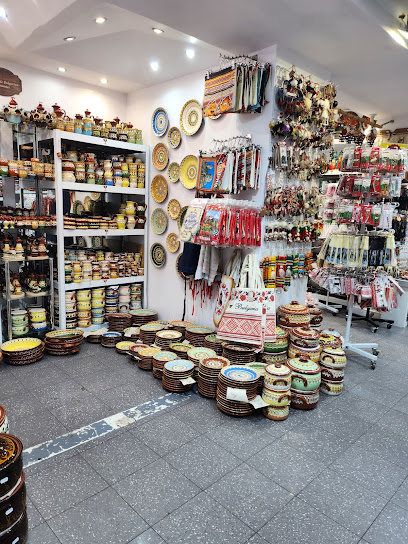
Souvenirs of Bulgaria
Discover authentic Bulgarian treasures at Souvenirs of Bulgaria, where unique crafts meet vibrant local culture in the heart of Sofia.
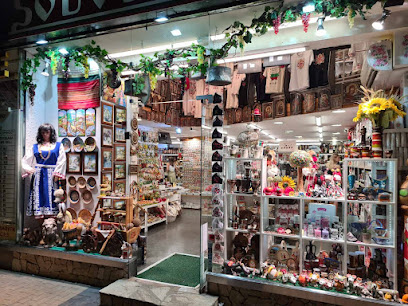
Bulgarian shop
Explore the vibrant culture of Bulgaria with unique souvenirs and artistic handicrafts at the Bulgarian Shop in the heart of Sofia.
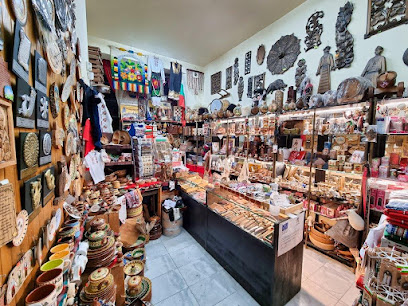
Езотеричен магазин Дария Esoteric shop Tarot and oracle cards
Immerse yourself in the mystical at Esoteric Shop Darija, Sofia's premier destination for tarot, oracle cards, and unique metaphysical gifts.
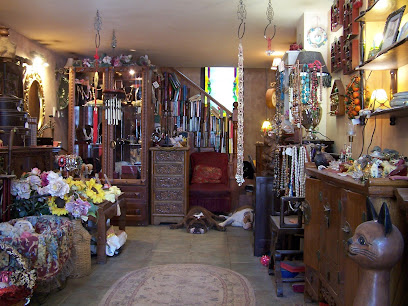
Rush
Explore the latest trends in clothing and accessories at Rush, a premier fashion destination in the heart of Sofia, Bulgaria.
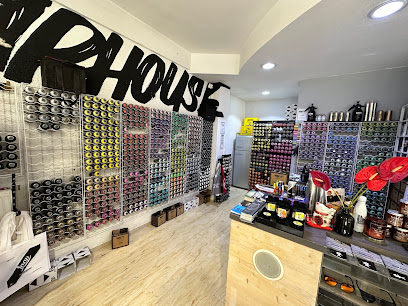
Бутик Vintage Sofia
Explore Boutique Vintage Sofia for unique, vintage-inspired fashion that adds a touch of elegance to your wardrobe while experiencing Sofia's vibrant style scene.

VIP SHOP - Saborna Boutique
Explore VIP SHOP - Saborna Boutique in Sofia for unique gifts and exquisite jewelry that embody Bulgarian artistry and craftsmanship.
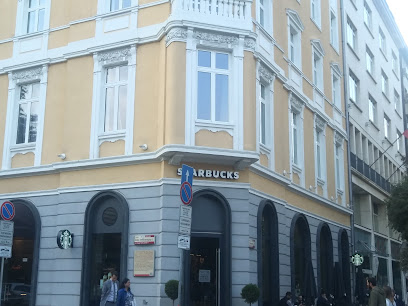
Craft Shop
Explore a treasure trove of handcrafted gifts and unique souvenirs at Sofia's Craft Shop, where local artistry meets Bulgarian culture.
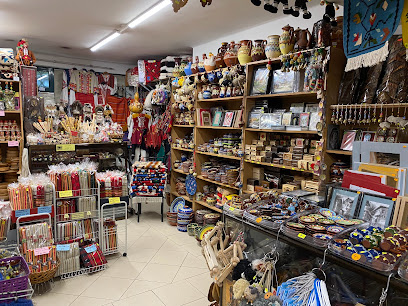
Urbanize shop
Explore Urbanize Shop in Sofia for trendy clothing and accessories that showcase contemporary fashion and local design.

BRAVE CREATION
Discover the artistic essence of Sofia at Brave Creation, a unique gift shop with fashion accessories, art, and souvenirs.
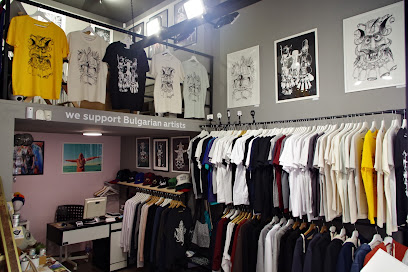
Art Shop Hand Made
Explore the unique charm of Art Shop Hand Made in Sofia, where handcrafted gifts capture the spirit of Bulgarian artistry and culture.
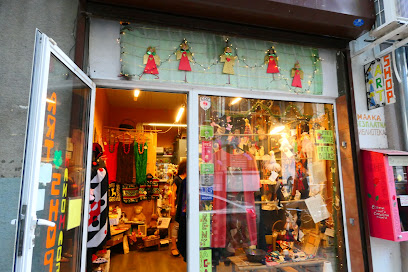
Essential bars & hidden hideouts
The Cocktail Bar
Discover Sofia's vibrant nightlife at The Cocktail Bar, where expertly crafted cocktails and a chic atmosphere create unforgettable experiences.
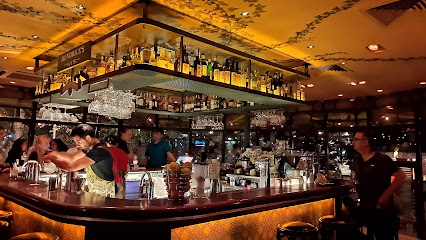
Umbrella Bar
Experience the vibrant grill culture of Sofia at Umbrella Bar, where delicious traditional dishes meet a lively ambiance.
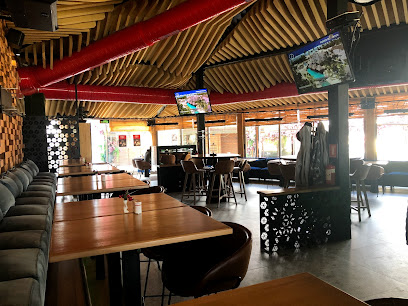
One More Park Bar
Experience the vibrant atmosphere of One More Park Bar in Sofia, where delightful drinks meet the beauty of Borisova Gradina.
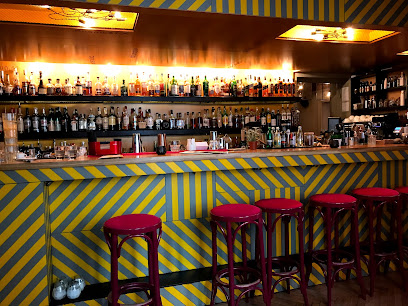
Rock'nRolla
Experience the vibrant nightlife of Sofia at Rock'nRolla, a rock music club offering live performances, karaoke, and exquisite cocktails.
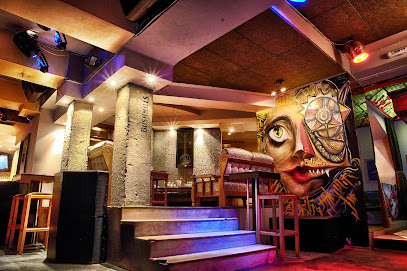
PUBLIC
Discover PUBLIC, Sofia's lively bar, where the vibrant atmosphere, exquisite drinks, and friendly service promise an unforgettable night out.
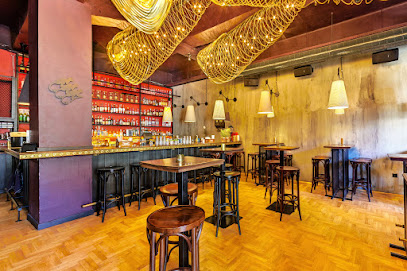
Бар Кристал
Discover the lively spirit of Sofia at Bar Kristal, where great drinks and a vibrant atmosphere await you.
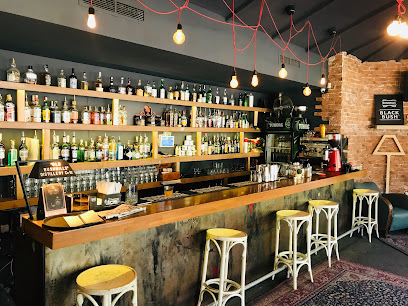
Bar Road 66
Experience the vibrant nightlife of Sofia at Bar Road 66, where cocktails, live music, and unforgettable memories await.
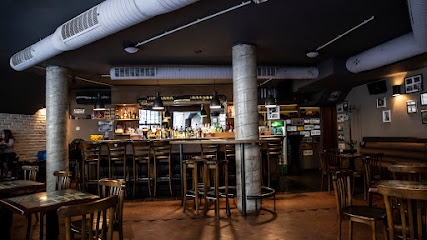
Bar Me
Discover the vibrant nightlife of Sofia at Bar Me, where expertly crafted cocktails meet a stylish ambiance in the heart of the city.
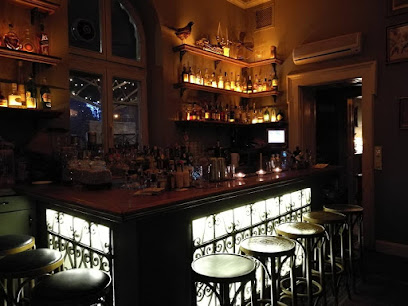
DELTA BLUES BAR
Experience Sofia's vibrant nightlife at Delta Blues Bar, where live blues music meets a cozy atmosphere and a delightful drink menu.
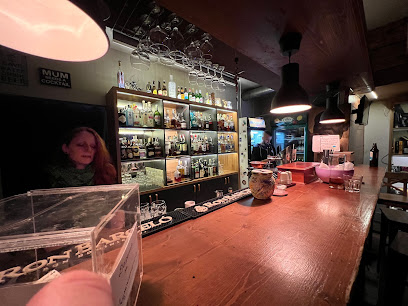
Barfly Sofia
Experience Sofia's vibrant nightlife at Barfly, where creative cocktails and live music create an unforgettable atmosphere.
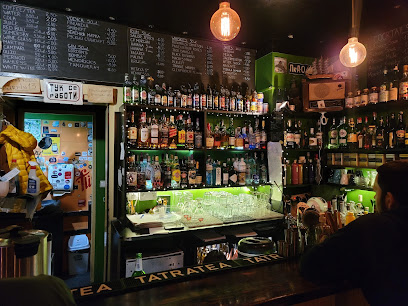
3 oz Bar
Experience Sofia’s nightlife at 3 oz Bar, where creative cocktails and a lively atmosphere await you in the heart of the city.

Cush.Bar
Discover Sofia’s vibrant nightlife at Cush.Bar, an art café and live music venue where creativity and culture come alive.
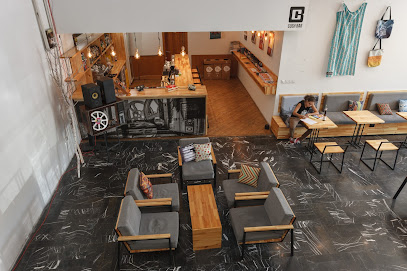
Bar Singles
Discover the vibrant nightlife at Bar Singles, Sofia's premier live music venue, where great drinks and energetic performances await every night.
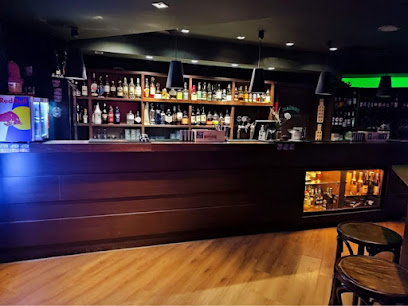
Rabbit Hole
Discover the vibrant atmosphere of Rabbit Hole, a beloved bar in Sofia, perfect for cocktails and local culture.
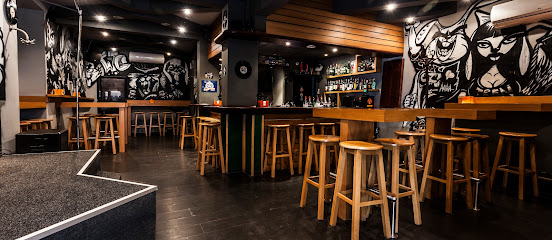
Street Bar
Experience the vibrant nightlife of Sofia at Street Bar, where delicious drinks meet a lively atmosphere in the heart of Bulgaria's capital.
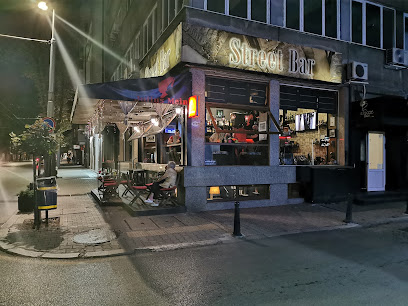
Local Phrases about Sofia Region
-
- HelloЗдравей
[Zdravey] - GoodbyeДовиждане
[Dovizhdane] - YesДа
[Da] - NoНе
[Ne] - Please/You're welcomeМоля
[Molya] - Thank youБлагодаря
[Blagodarya] - Excuse me/SorryИзвинявай
[Izvinyavay] - How are you?Как си?
[Kak si?] - Fine. And you?Добре. А ти?
[Dobre. A ti?] - Do you speak English?Говорите ли английски?
[Govorite li angliyski?] - I don't understandНе разбирам
[Ne razbiram]
- HelloЗдравей
-
- I'd like to see the menu, pleaseБих искал да видя менюто, моля
[Bih iskal da vida menuto, molya] - I don't eat meatНе ям месо
[Ne yam meso] - Cheers!На здраве!
[Na zdrave!] - I would like to pay, pleaseБих искал да платя, моля
[Bih iskal da platya, molya]
- I'd like to see the menu, pleaseБих искал да видя менюто, моля
-
- Help!Помощ!
[Pomosht!] - Go away!Изчезвай!
[Izchezvay!] - Call the Police!Обадете се на полицията!
[Obadete se na politsiyata!] - Call a doctor!Обадете се на лекар!
[Obadete se na lekar!] - I'm lostЗагубих се
[Zagubih se] - I'm illБолен съм
[Bolen sam]
- Help!Помощ!
-
- I'd like to buy...Бих искал да купя...
[Bih iskal da kupya...] - I'm just lookingПросто разглеждам
[Prosto razglezhdam] - How much is it?Колко струва?
[Kolko struva?] - That's too expensiveТова е твърде скъпо
[Tova e tvurde skupo] - Can you lower the price?Можете ли да намалите цената?
[Mozhete li da namalite tsenata?]
- I'd like to buy...Бих искал да купя...
-
- What time is it?Колко е часът?
[Kolko e chasat?] - It's one o'clockЕдин час
[Edin chas] - Half past (10)Половина на (10)
[Polovina na (10)] - MorningСутрин
[Sutrin] - AfternoonСледобед
[Sledobed] - EveningВечер
[Vecher] - YesterdayВчера
[Vchera] - TodayДнес
[Dnes] - TomorrowУтре
[Utre] - 1едно
[edno] - 2две
[dve] - 3три
[tri] - 4четири
[chetiri] - 5пет
[pet] - 6шест
[shest] - 7седем
[sedem] - 8осем
[osem] - 9девет
[devet] - 10десет
[deset]
- What time is it?Колко е часът?
-
- Where's a/the...?Къде е...
[Kade e...] - What's the address?Какъв е адресът?
[Kakav e adresat?] - Can you show me (on the map)?Можете ли да ми покажете (на картата)?
[Mozhete li da mi pokazhete (na kartata)?] - When's the next (bus)?Кога е следващият (автобус)?
[Koga e sledvashtiyat (avtobus)?] - A ticket (to ....)Билет (до ....)
[Bilet (do ....)]
- Where's a/the...?Къде е...
History of Sofia Region
-
Sofia, the capital of Bulgaria, has roots that trace back to the 7th century BC when the Thracian tribe Serdi established the settlement known as Serdica. Later, the Romans took over, transforming it into a significant administrative hub. Emperor Constantine the Great famously referred to Serdica as 'My Rome.' Remnants of Roman architecture, such as the St. George Rotunda and the Roman wall, bear testimony to this era.
-
During the medieval period, Sofia was an important stronghold for the First and Second Bulgarian Empires. The city was known as Sredets and played a crucial role in the political and cultural life of the region. The Boyana Church, a UNESCO World Heritage site, is a prime example of this era's ecclesiastical architecture and features exquisite frescoes dating back to 1259.
-
Sofia fell under Ottoman rule in the late 14th century and remained part of the Ottoman Empire for nearly five centuries. During this time, the city retained its significance as a regional center. The Banya Bashi Mosque, built in 1576, is one of the few remaining buildings from this period, showcasing the architectural influence of the Ottomans.
-
The Russo-Turkish War of 1877-78 led to Sofia's liberation from Ottoman rule. On April 4, 1879, Sofia was declared the capital of the newly liberated Bulgarian state. This period saw rapid modernization and urban development, spearheaded by figures like Ivan Vazov and other national revivalists. The Alexander Nevsky Cathedral, completed in 1912, stands as a monument to this transformative era.
-
Sofia played a significant role during both World Wars. After World War II, Bulgaria fell within the Soviet sphere of influence. The city underwent extensive industrialization and modernization, reflected in its architecture and infrastructure. Landmarks like the Largo complex and the National Palace of Culture symbolize this period of socialist realism.
-
The fall of the Berlin Wall in 1989 ushered in a new era for Sofia and Bulgaria as a whole. The transition from a socialist to a market economy brought significant changes to the city's landscape and culture. Modern Sofia is a blend of its historical legacy and contemporary aspirations, evident in its vibrant arts scene and bustling urban life.
Sofia Region Essentials
-
Sofia Region is easily accessible via Sofia Airport (SOF), which is the main international gateway. The airport is located approximately 10 kilometers east of the city center. From the airport, you can take a taxi, bus, or metro to reach various parts of the region. Direct flights to Sofia are available from many major cities in Europe and some from the Middle East and Asia. For those traveling by train, Sofia Central Railway Station connects to major cities in Bulgaria and neighboring countries. Buses are also a convenient option, with numerous domestic and international routes terminating at Sofia Central Bus Station.
-
Sofia Region offers a variety of transportation options. The public transportation system includes buses, trams, trolleys, and a metro network. Tickets can be purchased from kiosks, ticket machines, or directly from the driver for buses and trams. Taxis are widely available and relatively inexpensive, but ensure the meter is running to avoid overcharging. Car rentals are another option, with multiple rental agencies located around the city and at the airport. For short distances, cycling and walking are viable options, particularly in the more central areas.
-
The official currency in Bulgaria is the Bulgarian Lev (BGN). Credit and debit cards are widely accepted in Sofia Region, including in hotels, restaurants, and larger shops. However, it is advisable to carry some cash for smaller establishments, markets, and rural areas. ATMs are widely available throughout Sofia, and currency exchange offices offer competitive rates. Be cautious of dynamic currency conversion at ATMs and POS terminals to avoid unfavorable exchange rates.
-
Sofia Region is generally safe for tourists, but it is important to exercise common sense and standard precautions. Be aware of your surroundings, especially in crowded areas like markets and public transportation, where pickpocketing can occur. Avoid poorly lit and secluded areas at night. Neighbourhoods such as Nadezhda and the areas around the Central Railway Station have higher crime rates and should be approached with caution. Always keep an eye on your belongings and use hotel safes for valuables.
-
In case of emergency, dial 112 for immediate assistance. This number connects you to police, fire, and medical services. Sofia has several hospitals and clinics, including emergency rooms, for medical emergencies. It is advisable to have travel insurance that covers medical expenses. For minor health issues, numerous pharmacies are available throughout the region, many of which operate 24/7. Familiarize yourself with the location of your country's embassy or consulate in Sofia in case you need consular assistance.
-
Fashion: Do dress conservatively when visiting religious sites; avoid wearing revealing clothing. Religion: Do respect local customs and traditions. When visiting churches, cover your head and shoulders and avoid talking loudly. Public Transport: Do validate your ticket upon boarding public transport. Don’t eat or drink on public transport. Greetings: Do greet people with a firm handshake. A nod or slight bow of the head is also polite. Eating & Drinking: Do try local dishes and accept food and drink offerings graciously. Don’t refuse hospitality, as it may be considered rude.
-
To experience Sofia Region like a local, visit the local markets such as the Central Market Hall and the Women's Market for fresh produce and traditional Bulgarian goods. Engage with locals, who are often friendly and willing to share insights about their culture and history. Don’t miss visiting the Boyana Church, a UNESCO World Heritage Site, and the National Historical Museum. For a unique experience, take a walk through the Vitosha Boulevard, a popular pedestrian street with shops, cafes, and street performers. Hiking in Vitosha Mountain is also a favorite local activity, offering stunning views and a break from the urban environment.
Trending Landmarks in Sofia Region
-
South Park
-
National Palace of Culture Park
-
Borisova Gradina Park
-
Patriarchal Cathedral of St. Alexander Nevsky
-
The City Garden
-
National Palace of Culture (NPC)
-
Vitosha Nature Park
-
Eagles' Bridge
-
Prince's Garden
-
Doctors' Garden
-
Russian Monument Square
-
Cathedral of Saint Nedelya
-
Boyana Church
-
Kambanite (The Bells) Park
-
Vrana Park & Museum
Nearby Cities to Sofia Region
-
Things To Do in Gabrovo
-
Things To Do in Stara Zagora
-
Things To Do in Haskovo
-
Things To Do in Niš
-
Things To Do in Serres
-
Things To Do in Craiova
-
Things To Do in Kamenica
-
Things To Do in Gjilan
-
Things To Do in Kavala
-
Things To Do in Ruse
-
Things To Do in Podujevo
-
Things To Do in Ferizaj
-
Things To Do in Shtime
-
Things To Do in Vushtrri
-
Things To Do in Thessaloniki













